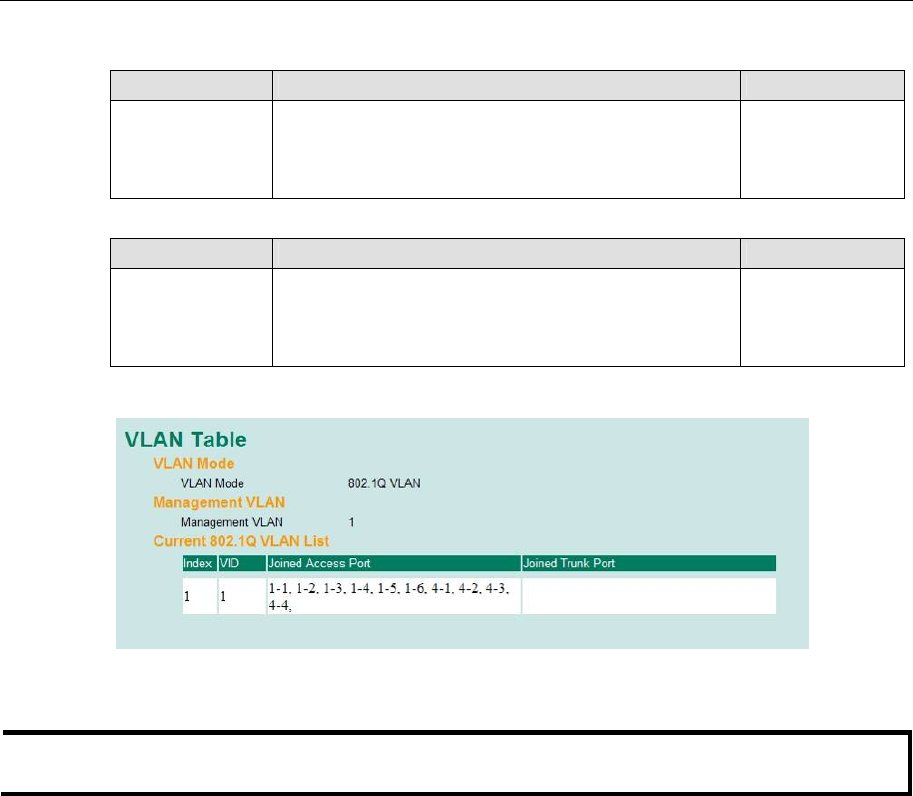
PT-7728 User’s Manual Featured Functions
3-44
Fixed VLAN List (Tagged)
Setting Description Factory Default
VID range from 1
to 4094
This field will be active only when selecting the Trunk
port type. Set the other VLAN ID for tagged devices that
connect to the Trunk port. Use commas to separate
different VIDs.
None
Forbidden VLAN List
Setting Description Factory Default
VID range from 1
to 4094
This field will be active only when selecting the Trunk
port type. Set the VLAN IDs that will not be supported
by this trunk port. Use commas to separate different
VIDs.
None
VLAN Table
In 802.1Q VLAN table, you can review the VLAN groups that were created, Joined Access Ports,
and Trunk Ports, and in Port-based VLAN table, you can review the VLAN group and Joined port.
NOTE
The physical network can have a maximum of 64 VLAN settings.
Using Multicast Filtering
Multicast filtering improves the performance of networks that carry multicast traffic. This section
explains multicasts, multicast filtering, and how multicast filtering can be implemented on your
PT-7728.
The Concept of Multicast Filtering
What is an IP Multicast?
A multicast is a packet sent by one host to multiple hosts. Only those hosts that belong to a
specific multicast group will receive the multicast. If the network is set up correctly, a multicast
can only be sent to an end-station or a subset of end-stations on a LAN or VLAN that belong to the
multicast group. Multicast group members can be distributed across multiple subnets, so that
multicast transmissions can occur within a campus LAN or over a WAN. In addition, networks
that support IP multicast send only one copy of the desired information across the network until
the delivery path that reaches group members diverges. To make more efficient use of network
bandwidth, it is only at these points that multicast packets are duplicated and forwarded. A
multicast packet has a multicast group address in the destination address field of the packet’s IP
header.


















